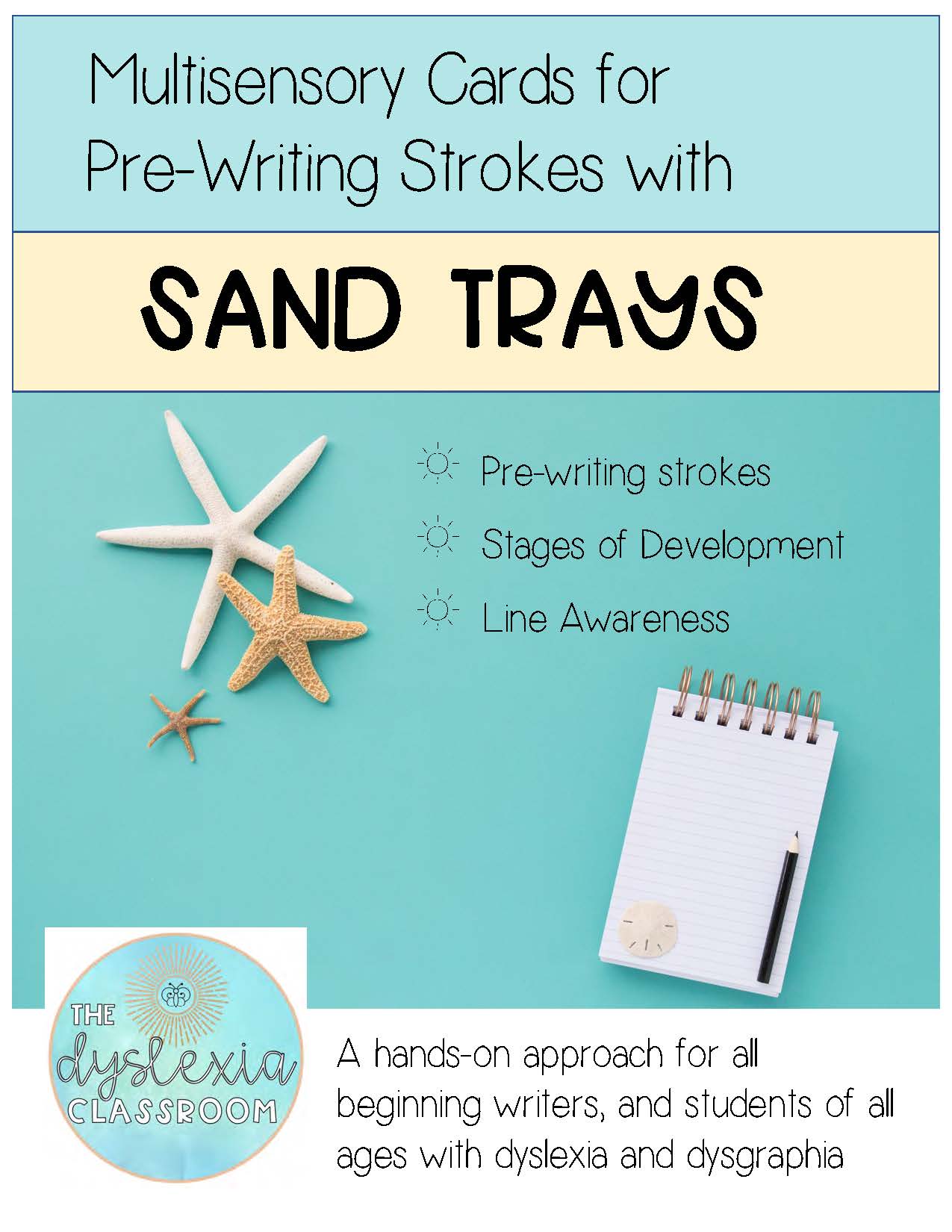Using Sand Trays for Multisensory Handwriting Practice

Summer is a wonderful time to relax and play in the sand. Using sand trays is a fantastic way to sneak in some multisensory pre-writing strokes and handwriting practice!
I have found that students of all ages love to use the sand tray in our therapy sessions. The use of sand trays provide kinesthetic practice for pre-writing letter formation and letter practice. The drag, or pull, in the sand helps build connections for the learner through what we refer to as multisensory practice, or when we are engaging at least three of the senses at the same time. When we use multiple senses at the same time, we have a higher chance of retaining the information.

Setting up a Sand Tray
-
Sand trays can be made with any kind of flat tray with sides (to keep the sand inside). I like cookie trays as they are magnetic, stackable, and reasonably priced. I painted my trays with black chalkboard paint prior to provide contrast in color - bonus is that they can be used as chalkboards too! (I LOVE to make the most of my materials and have found many other purposes for the trays!)
-
Place sand in the tray - you can use decorative sand (located in most home decor sections of stores) or even collect some sand from the beach - just make sure to sift through it prior to use and remove any debris or little critters.
- If your students are new to using the sand tray, it is often helpful to provide them with a few minutes of exploratory time prior to using the sand tray as a tool. While this may seem like taking extra time away from your lesson, I have found that when we didn't do this, it was always needed.
Using the Sand Tray - Endless possibilities!
Pre-writing strokes -
Pre-writing strokes tend to develop on a continuum, and follow a fairly predictable pattern of development. While children typically develop these pre-writing strokes by the age of 5, those students with dysgraphia and dyslexia may benefit from practicing these prior to moving to letter formations or as a warm up for handwriting practice.

(Coming soon! You can access and download this chart by subscribing to my newsletter which has access to a freebie library too!)
When I have a student that is struggling with letter formation, I take them back through these pre-writing strokes using the sand tray. In addition to the sand tray, we will practice these strokes. I used to hand make sets of index cards with the strokes for my clients, but I have finally developed sand tray cards that are more extensive, elegant, and simple in their design - making them appropriate for older students to use as well. You can find these on my store page if you are interested.
Handwriting Practice
Use the sand trays for handwriting warm-up. Even before beginning more formal handwriting strokes, a quick warm up of lines, circles, swirls are all great ways to incorporate some play into our work. Even at this stage, checking starting placement for strokes and movement from left-to-right is key to monitor. Have students begin their lines from top down, swirls moving in a "curve up loop left" motion, and circles in a counter-clockwise motion.
Once students are ready for formal letter formation instruction, using the sand tray is a great interactive and engaging way to practice the letters and then transfer them to paper. Being consistent with letter approach strokes and letter formation is key to helping create the automaticity needed to assist with writing.
Letter-Sound Association
Using the sand tray to connect the letter (grapheme) and the sound (phoneme) is a great way to practice the link to spelling in a multisensory way. You say a sound, and the student then the student echoes the sound, names the letter/s, and writes the letter/s (grapheme) on the tray. Such a simple, yet powerful practice!

Some ways to use sand trays with students:
- pre-writing stroke practice (lines, circles, swirls, wipers)
- letter formations
- cursive approach strokes and letter formations
- spelling practice
- sound-letter dictation
Older students can benefit from working with the sand tray too. Often when I am working with older students who have dysgraphia or inconsistent or inaccurate letter formations, we take a step back and look at approach strokes.
The sand trays allow for students to focus on these strokes in a fun and engaging way that connects their senses. However, I don't ever want my older students to feel that what we are doing is "babyish" so I needed to find some ways in which to provide them with the skills needed in a way that honored their age. To help with this, I made some pre-writing stroke cards with my older learners in mind. They are muted colors and have no hint of early writing language or cutesy pictures - making them approachable for our older students. My older students have loved using these in our therapy sessions, and we have found ways in which to differentiate how they are used.
If you find that your child or student is reluctant to write, bringing in some sand tray play/work may be just what they need!

This information is the intellectual property of @2016 The Dyslexia Classroom®. Do not use or repurpose without expressed permission from The Dyslexia Classroom®. Please email [email protected] for permission, and give The Dyslexia Classroom® an attribution if you use, reference, or quote/paraphrase copyrighted materials. This includes but is not limited to blogs, social media, and resources.

Multisensory Cards for Pre-Writing Strokes with Sand Trays




